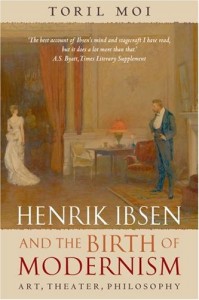The term “modernism” designates a movement in art, literature and music, beginning in the 19thC and lasting into the 20thC, ending approximately with WW II.
Art which is modernist may possess the following 12 characteristics:
- it is psychological in nature and attempts to render individual consciousness or a more subjective reality
- its depiction of time and/or narrative is not necessarily chronological or external, but rather non-sequential, non-linear, more internal and subjective
- the modernist “self” is represented as tragically and irrevocably fragmented and isolated
- consciousness is presented as active, as creating reality and thus, by implication, the reader of modernist texts becomes an active producer rather than passive consumer of meaning
- it represents a relativity of perspective or more than one “true” and valid point of view; e=mc2
- its ultimate “meaning” is open, indeterminate, ambiguous
- it is humanist and/or existentialist, often calling into question the existence of a Christian God
- it can appear somewhat despairing or bleak in tone
- it attempts to break out of established convention and tradition, particularly that depicted by realism
- it draws attention to its status as art, without any over-riding ethical or moral orientation; it is “art for art’s sake”
- it foregrounds an awareness of the problems of representation and epistemological and ontological questions
- its form is often employed to convey its content
Sources:
Altieri, Charles. “Modernism and Postmodernism.” The New Princeton Encyclopedia of Poetry and
Poetics. Ed. Alex Preminger and T.V.F.Brogan. Princeton: Princeton UP, 1993.
Bradbury, Malcolm and James McFarlane, eds. Modernism: 1890-1930. New York: Penguin, 1976
Cuddon, J.A. “Modernism.” Dictionary of Literary Terms and Literary Theory. New York: Penguin, 1992.
Faulkner, Peter. Modernism. New York: Metheun, 1985.
